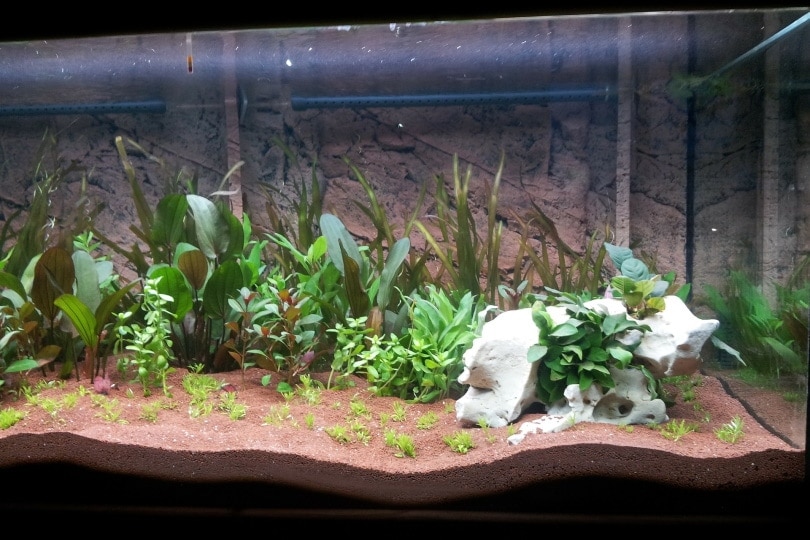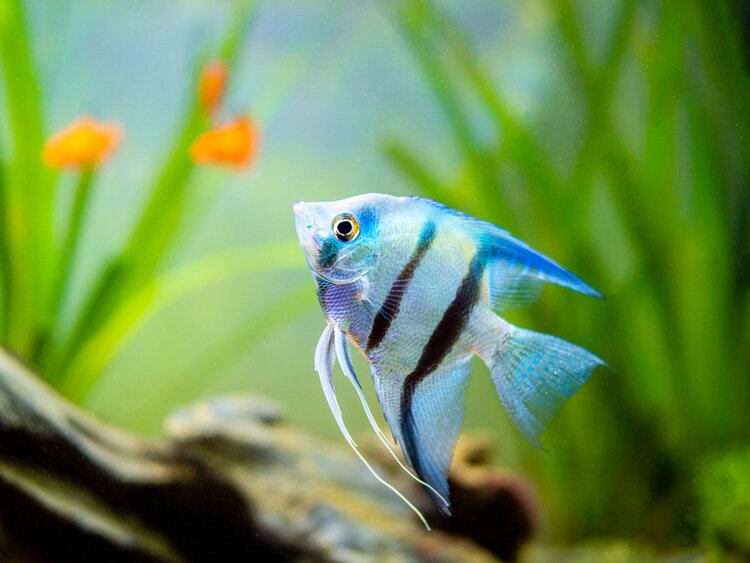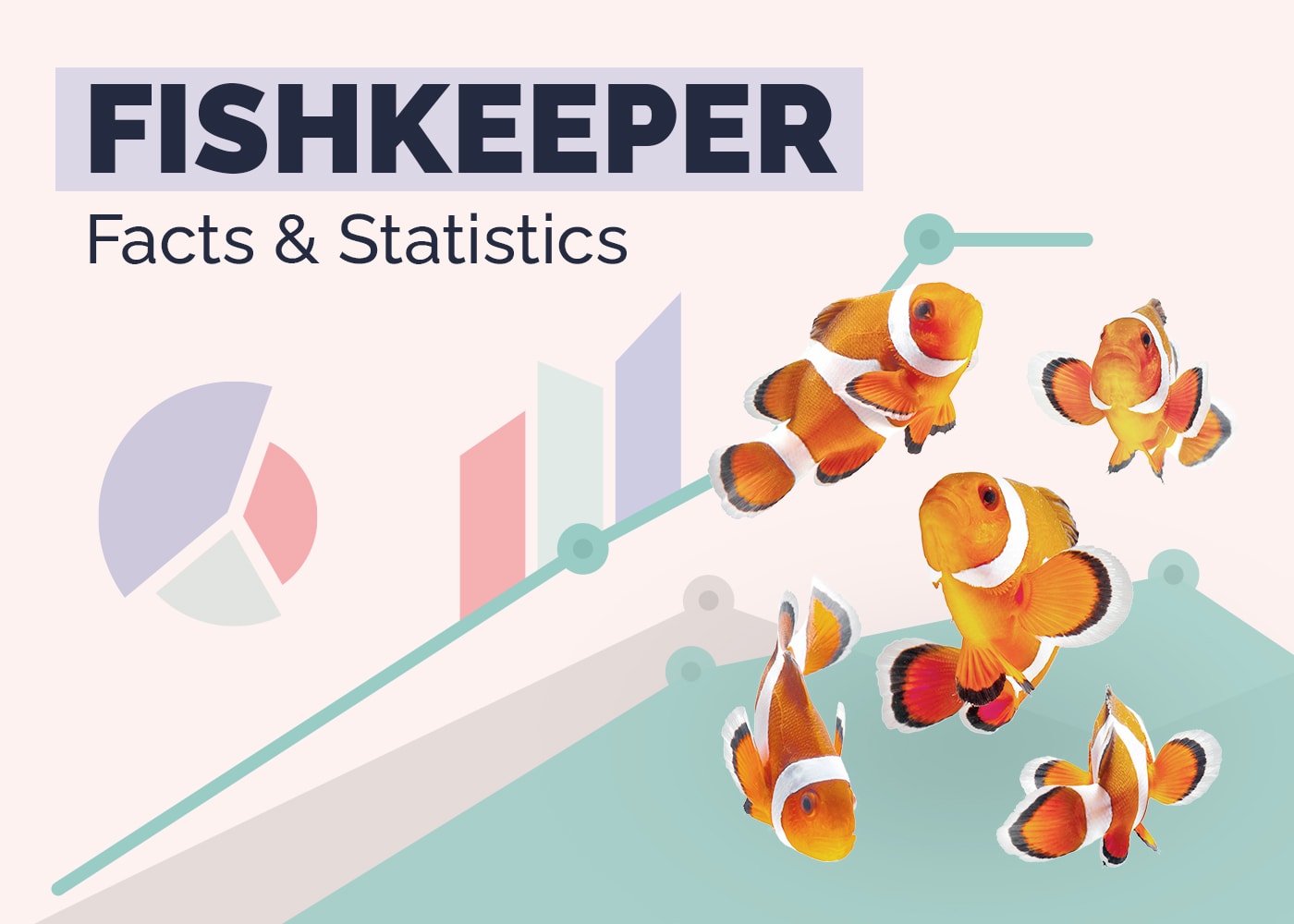Are Axolotls an Endangered Species & How Can We Protect Them?

Updated on
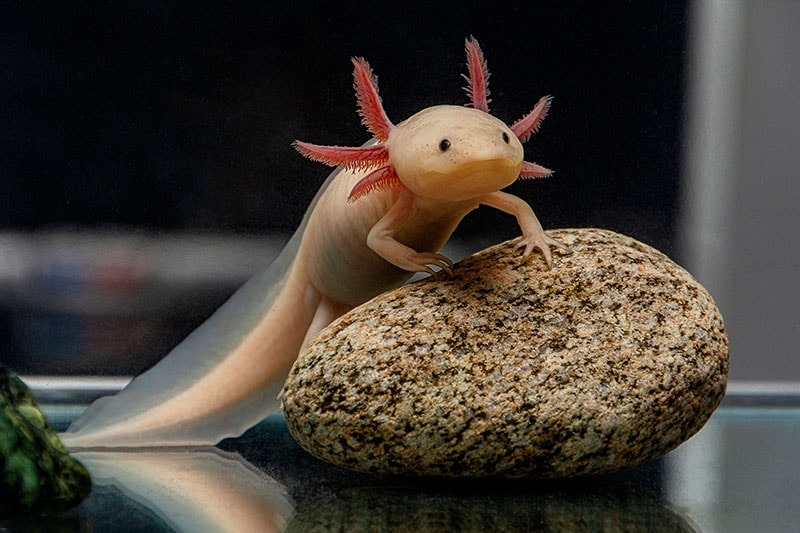
Axolotls used to be abundant in Lake Xochimilco in Mexico, but most of these adorable amphibians live in aquariums or pet shops. However, Axolotls are critically endangered in their natural habitat, which means they face extinction.
Axolotls also play a significant role in medical research, and it is very important for us to protect this species. In this article, we’ll discuss the conservation status of this incredible amphibian, why they are important, and how you can keep one safe as a pet.
What is An Axolotl?
You will recognize an Axolotl by its cute smile and tadpole-like features. They measure about 9 inches and vary in pigmentation types. It has a large head, a broad flat body, and signature feathery gills that wave through the water. Their unique name originates from Xolotl, the Aztec god of fire and lightning.
They are a salamander species known as Mexican Walking Fish and often get mistaken for fish. Due to a rare condition known as neoteny, they retain most of their larval features in adulthood and spend their whole lives in water.
Axolotls feed on insects, worms, mollusks, crustaceans, and other small fish, and although they were once at the top of their food chain, they are now threatened by Tilapia and Carp.
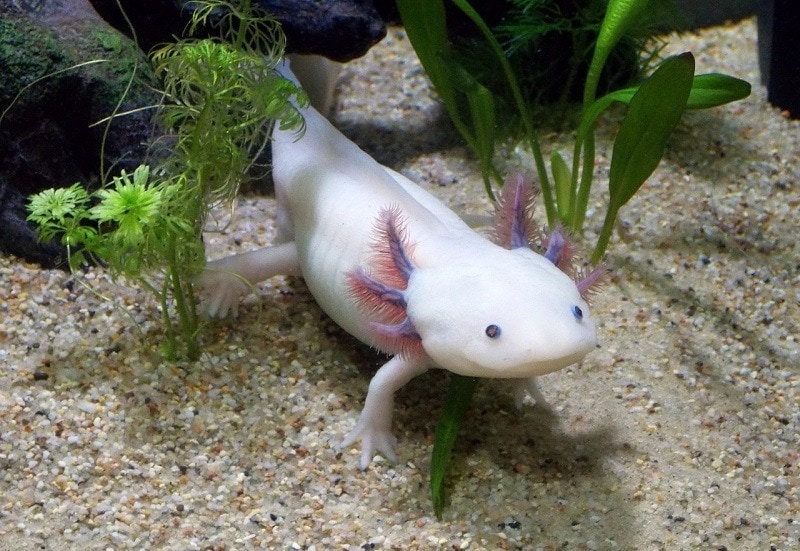
Are Axolotls Endangered?
These unique salamanders are native to Xochimiilco. They are an important symbol of Mexican culture in Lake Xochimilco and Lake Chalco in the Valley of Mexico. Sadly, they have become threatened due to pollution, urbanization, overfishing, and invasive species. Axolotls are critically endangered, meaning they could soon be extinct and only part of history.
Lake Chalco was drained to allow for urban development, which wiped out much of the environment for Axolotls. This left Lake Xochimilco as the only habitat for the population of this species to survive, along with the small network of canals that crisscross the Xochimilco district.
Non-native predators are another threat, along with the reduced size of the Axolotl’s habitat. The invasive Carp and Tilapia have reduced Axolotl numbers significantly.
Pollution is another issue that can be avoided but sadly isn’t. Trash and plastics clog the canals, and heavy metals and ammonia are also spilled from waste treatment, polluting the habitat.
Thankfully, dedicated humans try to make a difference; there are programs to breed, release, and track Axolotls into canals and control ponds around Xochimilco to retain their natural genetic diversity. While this sounds positive and promising, a long-term, ideal habitat for Axolotls is the only solution.
Why We Should Protect the Axolotls
Axolotls have a unique genetic makeup; because of this, they can also be found in laboratories worldwide. They can regenerate their limbs up to five times, reaching full growth within only a few weeks. They can even regenerate organs, parts of the eyes, and portions of the brain. They are studied for these unique abilities, and cancer researchers study them for their phenomenal resistance to developing cancerous tissues.
For centuries, Axolotls have had an important role in comprehending how vertebrate organs develop and work. For example, they assisted scientists in understanding the causes of spina bifida in humans. These regenerative abilities can open doors in medicine and science for everything from cancer treatments to tissue repair.
However, captive populations are susceptible to disease as a result of centuries of inbreeding, and wild Axolotls are critically endangered, which means that scientists are losing the opportunity to learn and discover important information about the biology of this species.
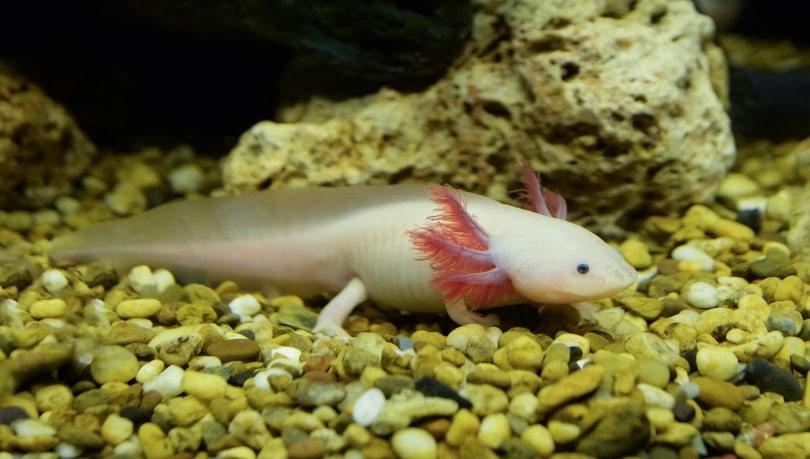
Is It Legal to Own an Axolotls
Because Axolotls are critically endangered, they should never be taken from the wild for the pet trade. The majority of pet Axolotls come from the captive population that was used for scientific research.
Axolotls are not legal to own in all states. In some states, including New Jersey, California, Maine, and Virginia, it is illegal to own one, but in New Mexico, it is legal to own but illegal to import. To own an Axolotl, you must check your local exotic pet laws to see if it is legal in your state.
Axolotls as Pets
Axolotls spend their entire life in water, which means that as a pet, they are pets you observe rather than handle. They are generally easy to care for with straightforward dietary needs, so they make good pets for first-timers.
If you manage to get your hands on one of these endangered amphibians, you must keep it safe and healthy.
- Don’t use gravel as they accidentally ingest it. Instead, use sand or have the bottom bare.
- Temperatures should stay below 70˚ F.
- Axolotls are not fond of light, so ensure they are kept in a dim area.
- Weekly partial water changes and a low-flow filter will help keep the environment clean.
- An Axolotl’s body is made up mostly of cartilage, so it shouldn’t be handled unless necessary. Use a fine mesh net if you need to remove it from the tank.
- Axolotls need a high-protein diet. Avoid fishing worms as they can increase the chance of parasites.
- Don’t keep an Axolotl with any other species. It is also recommended not to house two Axolotls together since juvenile Axolotls can be cannibalistic.
Conclusion
Axolotls are fascinating amphibians making significant progress in medical research, and understanding their biology can significantly benefit human health. That is why we need to protect this species. Sadly, Axolotls are critically endangered and nearly extinct due to pollution, urbanization, and invasive species. They are popular pets that are typically easy to care for, but they should never be taken from the wild for the pet trade due to their conservation status. If you are considering an Axolotl as a pet, be sure to do your research and ensure it is legal in your state.
Featured Image Credit: Iva Dimova, Shutterstock

